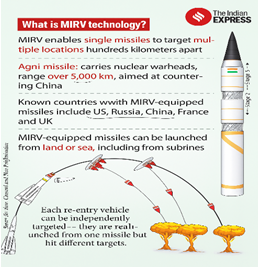
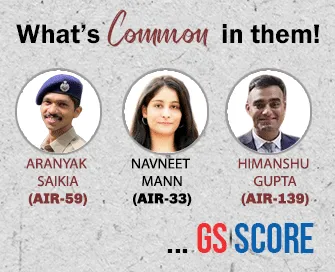
21th August 2025 (21 Topics)
Mains Issues
Context:
The India Meteorological Department (IMD) has expanded the use of AI/ML-based models and launched Bharat Forecasting System (BharatFS) to improve localized weather predictions up to the Gram Panchayat level.
Institutional Framework
- India Meteorological Department (IMD): Apex body for meteorology, under the Ministry of Earth Sciences (MoES).
- MoES Initiatives: Establishment of AI/ML/DL research at IITM Pune, creation of GPU-enabled computing infrastructure, and collaborations with IITs, IIITs, ISRO, DRDO, and MeitY.
Artificial Intelligence/Machine Learning Applications in Forecasting
- Cyclone Monitoring: Advanced Dvorak Technique (AiDT), AI-based models from ECMWF.
- Forecasting Areas: Short-range global forecasting, precipitation downscaling, fog, lightning/thunderstorm, fire location.
- Deep Learning Models: Improving global precipitation within Numerical Weather Prediction (NWP) systems.
- MausamGPT: AI-based chatbot being developed as a climate service advisor for farmers.
New Forecasting Systems
- Gram Panchayat Level Weather Forecasting (GPLWF):
- Forecasts at micro-level for farmers using multi-model ensemble technique.
- Accessible via e-Gramswaraj, Meri Panchayat App, e-Manchitra, Mausamgram.
- Bharat Forecasting System (BharatFS):
- Launched in May 2025.
- Resolution:6 km (vs 12 km in earlier GFS).
- Provides rainfall forecasts up to 10 days at Panchayat/cluster level.
- CFSv2 Model: Provides extended range forecasts (up to 4 weeks).
Dissemination of Information
- Apps & Platforms:Meghdoot, Mausam, WhatsApp, Facebook, e-Gramswaraj.
- Integration: With IT platforms of 18 State Governments.
- Agromet Advisories: Issued twice a week through AMFUs covering 127 agroclimatic zones.
Computing Infrastructure
- High Power Computing System (HPCS) with 22 PetaFLOPS capacity.
- Dedicated GPUs (A100, H100) for AI/ML research in weather prediction.
Significance
- Enhances accuracy, timeliness, and localization of forecasts.
- Critical for farmers, fishermen, disaster management authorities.
- Supports climate resilience, food security, and disaster risk reduction.


Mains Issues
Context:
India celebrates its second National Space Day on August 23, 2025, marking Chandrayaan-3’s success and upcoming missions, but lacks a comprehensive national space legislation to regulate and promote its growing space sector.
India’s Expanding Space Sector and Legal Gaps
Background
- India has emerged as a major space power with missions like Chandrayaan-3, Gaganyaan, and the proposed Bharat Antariksh Station.
- Despite progress, the absence of comprehensive national space legislation creates uncertainty for commercial and private actors.
- India has ratified major UN space treaties, but has not yet enacted a domestic law aligning with these obligations.
Global Space Legislation Framework
- Outer Space Treaty, 1967 (OST):
- Declares space as the “province of all mankind.”
- Prohibits national appropriation of outer space.
- States bear responsibility for space activities of both government and private entities.
- Companion treaties establish liability, rescue, registration, and moon agreements.
- National Legislations:
- U.S., Japan, Luxembourg have enacted laws facilitating licensing, commercial rights, and liability coverage.
- Such frameworks ensure legal predictability and attract private investment.
India’s Current Approach
- Incremental and Methodical Strategy:
- Authorisation Frameworks Developed:
- Indian Space Policy, 2023 – encourages private participation.
- IN-SPACe Norms, Guidelines, and Procedures (NPG) – sets authorisation processes.
- Catalogue of Indian Standards for Space Industry – ensures safety standards.
- Pending Aspect:
- A comprehensive “Space Activities Law” covering liability, licensing, accident investigation, debris management, and intellectual property rights.
- Authorisation Frameworks Developed:
Industry Perspectives
- Statutory Authority for IN-SPACe: Needs clear legal mandate to function as regulator.
- Licensing and Clearances: Current system causes delays due to multiple ministries.
- FDI Rules: Demand for 100% FDI in satellite component manufacturing via automatic route.
- Liability and Insurance:
- India bears international responsibility, but private firms need mandatory third-party insurance.
- Affordable insurance frameworks crucial for startups.
- Intellectual Property (IP) Protection: To prevent brain-drain and ensure investor trust.
- Operational Needs:
- Mandatory accident investigation procedures.
- Space debris management laws.
- Unified framework for space-related data and satellite communication.
- Independent appellate body to avoid conflicts of interest.
Challenges
- Dual-use technologies create regulatory complexities.
- Fragmented institutional authority slows private sector approvals.
- Lack of a comprehensive liability framework increases risks for startups and investors.
- Absence of statutory backing for IN-SPACe reduces regulatory certainty.
Way Forward
- Enact National Space Legislation integrating UN treaty principles with India-specific needs.
- Provide statutory status to IN-SPACe as the central regulator.
- Establish clear licensing and FDI norms to attract investment.
- Introduce comprehensive liability and insurance frameworks for private actors.
- Codify IP protection and incentivise R&D partnerships among academia, industry, and government.
- Mandate space debris mitigation, accident investigations, and safety protocols.
- Create an independent appellate body for dispute resolution.


Mains Issues
Context:
India’s defence and internal security have undergone a paradigm shift under the last decade, marked by higher defence capacity, self-reliance, and decisive responses to terrorism.
Strengthening Defence Capacity
- Rising Defence Expenditure: Increased from ?2.53 lakh crore (2013–14) to ?6.81 lakh crore (2025–26).
- Domestic Production Boom: Defence production touched ?1.50 lakh crore (2024–25), over 3x growth since 2014–15.
- Exports Surge: Defence exports rose 34-fold, reaching ?23,622 crore in 2024–25. Exports now to 100+ nations.
- Key Manufacturing Gains: Fighter jets, missile systems, warships, carriers manufactured domestically.
Self-Reliance in Defence (Atmanirbharta)
- Defence Acquisition Procedure (DAP) 2020
- PrioritisesBuy (Indian–IDDM) ? indigenous design, development & manufacture.
- Indigenisation central to procurement.
- ‘Make’ Procedure Reforms
- Make-I: 70% govt. funding up to ?250 crore.
- Make-II: Industry-funded with assured orders.
- Make-III: Indian manufacturing with ToT/collaboration.
- 146 projects already approved.
- Liberalised FDI
- 74% via automatic route, 100% govt. approval for advanced technology.
- Innovation Push
- iDEX (2018) – support to start-ups/MSMEs.
- TDF – grants up to ?10 crore for defence technology.
- Indigenisation Portals & Positive Lists
- SRIJAN Portal (2020) – 46,798 items indigenised.
- Positive Lists (5 tranches) – 5,012 items progressively banned for import.
- Offsets & Strategic Partnerships
- Offset Portal (2019) ? transparency, OEM investments.
- SP Model (2017) ? Indian-global OEM collaborations.
Adoption of Technology & AI
- Defence AI Council (DAIC) and DAIPA to drive AI integration.
- DRDO: 9 thrust areas ? platforms, weapons, cyber, robotics, space, soldier support.
- DPSUs mandated AI roadmaps.
Responding to Cross-Border Terrorism
- Decisive Operations
- Uri (2016): Surgical strikes across LoC.
- Pulwama (2019): Balakot air strikes.
- Operation Sindoor (2025): Drone & precision strikes on 9 camps in PoK, eliminating >100 terrorists.
- Prime Ministers Five “New Normals” on Pakistan
- Firm response to terror.
- No tolerance for nuclear blackmail.
- Terrorists & sponsors equally accountable.
- Talks only on terrorism/PoK.
- Zero compromise on sovereignty.
- Sudarshan Chakra Mission (2025)
- Futuristic programme: indigenous R&D, predictive technologies, precision counter-systems.
- Target:Comprehensive national security shield by 2035.
Securing Internal Fronts
- Left-Wing Extremism (LWE)
- Affected districts reduced to <20.
- Naxal violence incidents dropped from 1,936 (2010) ? 374 (2024).
- Casualties down by 85%.
- 8,000 extremists surrendered in last decade.
- Focus: security + governance + development (roads, welfare, education).
- Atmanirbharta Beyond Defence
- Financial Inclusion: FI-Index 2025 at 67.0; PMJDY 56 crore accounts; ?2.64 lakh crore balance.
- Food Security: Grain output 354 MT (2024–25). PM-KISAN disbursed ?3.9 lakh crore.
- Dairy Sector: Milk output ?64% since 2014.
- Technology: Semiconductor Mission 2021 ? 10 projects, first 3nm chip centres operational.
- Blue Revolution: Fish production doubled (96 ? 195 lakh tonnes).
Challenges:
- Balancing indigenisation with operational readiness (delays in domestic projects).
- Need for sustained private sector participation.
- Emerging threats: cyber, space, hybrid warfare.
- Regional instability (Pakistan & China) still a major concern.
Way Forward:
- Deepen R&D collaboration with private sector & academia.
- Strengthen cybersecurity & space capabilities.
- Expand defence exports for strategic influence.
- Consolidate gains against LWE through governance-led development.
- Maintain balance between strategic autonomy and global defence partnerships.


Prelims Articles
Context:
IMD reported enhanced accuracy in monsoon forecasts (2021–2024) using Multi-Model Ensemble (MME) and Bharat Forecasting System (BharatFS).
Multi-Model Ensemble (MME):
- Adopted in 2021 for improved monsoon prediction.
- Combines multiple climate forecast models to reduce error and uncertainty.
- Accuracy improved significantly: 2.28% average error (2021–24) vs. 7.5% (2017–20).
Bharat Forecasting System (BharatFS):
- Launched in May 2025.
- High-resolution (6 km vs. earlier 12 km in GFS).
- Forecasts rainfall events up to 10 days (short and medium range).
- Provides forecasts at panchayat/cluster level.
Technological Support:
- Radar products (DWRs Karaikal& Chennai).
- Satellite data (10-minute to 3-hour intervals).
- End-to-end GIS-based Decision Support System (DSS) for early warnings.
Mission Mausam (2024–26):
- Cabinet-approved in 2024; launched in Jan 2025.
- Goal: Make India a “Weather-ready and Climate-smart Nation.”
- Focus areas: advanced HPC, AI/ML applications, next-gen radars, profilers, satellites, Earth system models, DSS, and last-mile connectivity.
Dissemination System:
- Multi-channel: social media, mobile apps, Common Alert Protocol, WhatsApp, APIs.
- Impact: Reduced death tolls in vulnerable rural & coastal regions due to timely evacuation.
Institutional Role:
- IMD, Pune (CRU) and RMC, Chennai lead localized forecasts for Tamil Nadu and cyclone-prone Cuddalore.


Prelims Articles
Context:
The Department of Posts has rolled out the Advanced Postal Technology (APT) under its Information Technology Modernisation Project 2.0, covering all 1.64 lakh Post Offices across India.
Background:
- DoP implemented IT Modernisation Project 2012 (DOP IT 1.0) as a Mission Mode e-Governance project.
- Evaluation (IIPA, 2021) found it effective in service delivery, financial inclusion, and digital integration.
DOP IT 2.0 (2022–30):
- Objective: Integration of applications, intelligent platforms, and interconnected ecosystems for postal & financial services.
- Rollout of Advanced Postal Technology (APT) across all 1.64 lakh post offices.
Key Features of APT:
- Faster, secure, user-friendly postal services.
- QR-code based digital payment acceptance.
- Internal Mobile App (IMA) in rural post offices for:
- Capturing digital signatures,
- Real-time update of article delivery,
- Integrated digital payment (dynamic QR code).
Core Banking Solution (CBS) Initiatives:
- ATMs, Internet/Mobile Banking, NEFT/RTGS, ECS, e-Passbook, IVRS.
- India Post Payments Bank (IPPB) linkage with Post Office Savings Accounts.
IPPB Initiatives:
- Services available at 64 lakh access points.
- Aadhaar Enabled Payment System (AePS), Virtual Debit Cards, digital transactions.
Mail & Parcel Sector Initiatives:
- Mail and Parcel Optimization Project (MPOP) for automation, real-time tracking, workflow standardisation.
- 2024 Post Office Regulation: all parcels classified as accountable articles for tracking.
- Rural post offices can now handle all types and weights of parcels.
- Tech-integration: real-time status, API-enabled services, SMS notifications, automated sorting.
Significance:
- Expands financial inclusion via IPPB in remote areas.
- Boosts rural e-commerce logistics.
- Supports Digital India & e-Governance.
- Enhances trust and transparency with real-time tracking and digital signatures.


Prelims Articles
Context:
The Department of Posts has rolled out the Advanced Postal Technology (APT) under its Information Technology Modernisation Project 2.0, covering all 1.64 lakh Post Offices across India.
Background:
- DoP implemented IT Modernisation Project 2012 (DOP IT 1.0) as a Mission Mode e-Governance project.
- Evaluation (IIPA, 2021) found it effective in service delivery, financial inclusion, and digital integration.
DOP IT 2.0 (2022–30):
- Objective: Integration of applications, intelligent platforms, and interconnected ecosystems for postal & financial services.
- Rollout of Advanced Postal Technology (APT) across all 1.64 lakh post offices.
Key Features of APT:
- Faster, secure, user-friendly postal services.
- QR-code based digital payment acceptance.
- Internal Mobile App (IMA) in rural post offices for:
- Capturing digital signatures,
- Real-time update of article delivery,
- Integrated digital payment (dynamic QR code).
Core Banking Solution (CBS) Initiatives:
- ATMs, Internet/Mobile Banking, NEFT/RTGS, ECS, e-Passbook, IVRS.
- India Post Payments Bank (IPPB) linkage with Post Office Savings Accounts.
IPPB Initiatives:
- Services available at 64 lakh access points.
- Aadhaar Enabled Payment System (AePS), Virtual Debit Cards, digital transactions.
Mail & Parcel Sector Initiatives:
- Mail and Parcel Optimization Project (MPOP) for automation, real-time tracking, workflow standardisation.
- 2024 Post Office Regulation: all parcels classified as accountable articles for tracking.
- Rural post offices can now handle all types and weights of parcels.
- Tech-integration: real-time status, API-enabled services, SMS notifications, automated sorting.
Significance:
- Expands financial inclusion via IPPB in remote areas.
- Boosts rural e-commerce logistics.
- Supports Digital India & e-Governance.
- Enhances trust and transparency with real-time tracking and digital signatures.


Prelims Articles
Context:
The Government of India has launched the ‘BhashaSetu’ Challenge to promote AI/ML-powered real-time translation across Indian languages, initially covering 12 languages with plans to expand to 10 more.
Implementing Agency & Aim:
- The BhashaSetu Challenge is promoted by the Government of India to encourage startups and innovators to build AI/ML-based solutions for real-time, scalable, and modular translation among Indian languages.
Languages Covered:
- Initially covers 12 languages—Assamese, Bangla, Gujarati, Kannada, Malayalam, Marathi, Hindi, Oriya, Punjabi, Telugu, Tamil, and Urdu. It will later expand to 10 more languages including Sanskrit, Dogri, Bodo, Maithili, Santhali, Konkani, Manipuri, Nepali, Kashmiri, and Sindhi.
Significance:
- Enhances Digital India by bridging linguistic barriers.
- Promotes linguistic inclusivity in governance, education, and digital services.
- Supports indigenous innovation in AI/ML for language technology.


Prelims Articles
Context:
The Ministry of Social Justice and Empowerment has begun implementing recommendations of Chintan Shivir 2025, incorporating best practices and revising guidelines of key welfare schemes.
Chintan Shivir 2025
- Organised by Ministry of Social Justice and Empowerment (MoSJE).
- Objective: Review of schemes, address challenges, share best practices, and suggest reforms.
- Recommendations integrated into major schemes of MoSJE.
Key Scholarship Reforms (for SC Students):
- Auto-apply for renewal.
- Digitisation& biometric authentication.
- De-duplication measures.
- Reduction in disbursement turnaround time.
- Timeline alignment with academic calendar.
- Outreach & awareness enhancement.
- Use of AI and emerging technologies.
- Verification process for non-domicile students.
Major Schemes Impacted:
- Pradhan Mantri AnusuchitJaatiAbhyuday Yojana (PM-AJAY):
- Expanded Adarsh Gram Component to cover villages with ?40% SC population and ?500 total population.
- Focus: saturation-based village development.
- Scheme for Economic Empowerment of DNTs (SEED):
- Additional 2,000 SHGs sanctioned across Gujarat, UP, Maharashtra, Rajasthan, MP.
- SHG bank accounts: Increased from 1,814 (Apr 2025) to 3,000 (Aug 2025).
- 5 lakh Ayushman Bharat cards distributed in 7 States (Gujarat, TN, UP, Maharashtra, Rajasthan, MP, Haryana).
- Doorstep delivery facilitated through hired agencies.
- National Action for Mechanised Sanitation Ecosystem (NAMASTE):
- New component: Upfront capital subsidy for private sector procurement of mechanised cleaning vehicles/equipment.
- Subsidy for Sanipreneurs increased to 50% of unit cost.
- Objective: Mechanisation of sanitation and private sector participation.


Prelims Articles
Context:
NICDC signed agreements with Haryana Government for developing an Integrated Manufacturing Cluster (IMC) at Hisar under the Amritsar-Kolkata Industrial Corridor (AKIC).
National Industrial Corridor Development Corporation (NICDC)
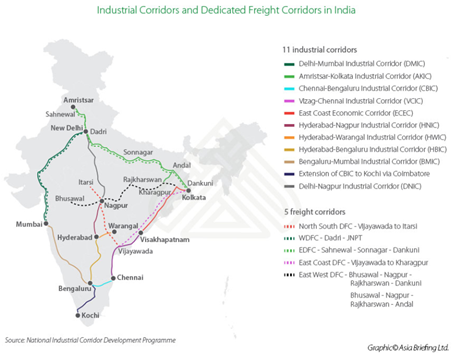
- Establishment & Structure: NICDC is a Special Purpose Vehicle (SPV) under the Ministry of Commerce & Industry. It is structured as a joint venture between the Government of India (through DPIIT) and financial institutions, with equity participation from government and institutions like DMIC Trust.
- Mandate: Its primary mandate is to plan and develop new industrial cities integrated with smart urban infrastructure and to promote next-generation industrial ecosystems.
- Industrial Corridors: NICDC is implementing 11 industrial corridors across India (e.g., Delhi–Mumbai, Amritsar–Kolkata, Bengaluru–Mumbai, Vizag–Chennai, Chennai–Bengaluru, East Coast Economic Corridor, etc.), covering multiple states for balanced regional development.
- Smart City Integration: The corridors emphasize ICT-enabled infrastructure, logistics hubs, transport connectivity, sustainable energy, and urban planning, ensuring cities grow as smart industrial clusters.
- Economic Significance:
- Aims to boost manufacturing share in GDP, aligned with Make in India.
- Focus on ease of doing business through plug-and-play facilities.
- Enhances India’s position in global value chains.
- Job Creation & Urbanization: Expected to generate millions of jobs, reduce regional disparities, and facilitate planned urbanization by linking cities with modern industrial townships.
- Sustainability Focus: The corridors adopt green energy integration, renewable power, waste management, and smart mobility solutions, promoting low-carbon industrial growth.


Prelims Articles
Context:
The Government of India, under the Nuclear Energy Mission (Budget 2025-26), has set a target of 100 GW nuclear capacity by 2047, making nuclear waste management a critical priority.
Legal and Regulatory Framework
- Governed under:
- Atomic Energy Act, 1962.
- Atomic Energy (Safe Disposal of Radioactive Wastes) Rules, 1987.
- Guiding principle: No waste is released unless cleared, exempted, or excluded from regulations.
- Regulatory compliance in line with IAEA guidelines.
Nuclear Waste and its Disposal
- Low & Intermediate-level waste:
- Generated during reactor operation.
- Managed at site itself.
- Techniques: Treatment, compaction, cement immobilization.
- Disposal in reinforced concrete trenches/tile holes.
- Surveillance: Bore-wells and groundwater monitoring.
- Solid Waste Volume Norm:
- About 15 cubic meters/year/MW including decommissioning.
High-Level Waste & Advanced Technologies
- India follows a closed nuclear fuel cycle:
- Spent fuel is reprocessed.
- Reusable fissile material recovered.
- High-level waste:
- Immobilized in inert glass matrix (vitrification).
- Stored in Solid Storage Surveillance Facilities (SSSF).
- Research and Development:
- Partitioning technologies for recovery of long-lived radioactive constituents.
- Radioisotope extraction for societal applications.
- Incineration of long-lived actinides ? reduces need for long-term geological disposal in future.

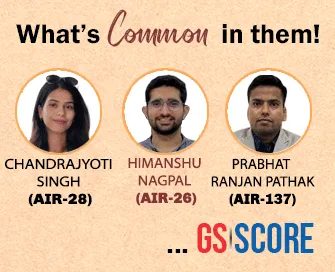
Prelims Articles
Context:
The Government highlighted measures to curb AI-driven cybercrimes and financial frauds, with I4C reporting savings of over ?5,489 crore through the CFCFRMS system.
Institutional Framework:
- Indian Cyber Crime Coordination Centre (I4C): Nodal body under MHA to coordinate and deal with cybercrimes.
- National Cyber Crime Reporting Portal (NCRP): Public platform to lodge cybercrime complaints.
- Citizen Financial Cyber Fraud Reporting and Management System (CFCFRMS): Operational since 2021; over ?5,489 crore saved from 82 lakh complaints. Helpline: 1930.
- Cyber Fraud Mitigation Centre (CFMC): Includes banks, payment aggregators, TSPs, IT intermediaries and police for real-time fraud mitigation.
Technological Measures:
- ASTR (AI & Big Data tool): Identifies mobile connections obtained under multiple fake identities. Over 82 lakh connections disconnected.
- National Cyber Forensic Laboratory (Investigation): Provides forensic support; assisted in 12,460 cases.
- Samanvaya Platform: MIS-based data repository, interstate crime linkage analysis, techno-legal support. Module Pratibimb maps criminal networks.
- CyMAC (Cyber Multi Agency Centre): Established Jan 2025 under MAC to address cybersecurity threats and AI-driven espionage.
- AI Cyber Guard Hackathon (with IndiaAI): To build AI tools for automatic cybercrime classification.
Capacity Building:
- CyTrain Portal (MOOC platform): Over 1,05,796 police officers enrolled, 82,704 certificates issued.
- Awareness campaigns with CBSE, NCC, NSS, NYKS.
- RBI campaigns (BE(A)WARE, Raju and the Forty Thieves) on financial frauds.
Awareness Initiatives:
- Caller tune campaign (1930 helpline & NCRP portal).
- National campaigns against Digital Arrest Scams (ads, social media influencers, metro announcements, cinema halls, Kumbh Mela 2025, IPL, MyGov campaigns).
- Walkathons, radio, TV, school campaigns, celebrity endorsements.
Impact:
- Over 42 lakh SIM cards and 2.63 lakh IMEIs blocked.
- Arrest of 12,987 accused and over 51 lakh interstate linkages detected.


Prelims Articles
Context:
ISRO provided details in Parliament regarding the infrastructure progress, funds allocation, and operational timeline of the upcoming Kulasekarapattinam spaceport in Tamil Nadu, targeted for commissioning in FY 2026–27.
Strategic Advantages of Kulasekarapattinam Spaceport
- Specialization: Designed primarily for Small Satellite Launch Vehicle (SSLV)
- Orbit Advantage:
- Ideal for Sun-Synchronous Polar Orbits (SSPOs).
- From SDSC-SHAR, launches to SSPO require rocket maneuvering to avoid dropping stages on inhabited landmasses, which reduces payload capacity.
- From Kulasekarapattinam, no such maneuvering is needed due to direct access over the Indian Ocean, enhancing efficiency.
- Payload Capacity:
- SSLV from Kulasekarapattinam: ~300 kg payload to SSPO.
- SSLV from SDSC-SHAR: inadequate payload capacity for useful missions.
National Importance
- Enhances India’s small satellite launch market share, catering to domestic and global demands.
- Supports start-ups and private players under the space sector reforms.
- Complements SDSC-SHAR, which handles larger launch vehicles (PSLV, GSLV, LVM3).


Prelims Articles
Context:
ISRO has initiated multiple remote sensing and communication projects, including Resourcesat-3 series, TRISHNA, HRSAT, and NETRA, to improve monitoring, connectivity, and natural resource management in Ladakh.
Upcoming Satellites in Ladakh:
- Resourcesat-3 & 3A, Resourcesat-3S & 3SA, HRSAT, G20 Satellite, and TRISHNA Satellite are expected to be realised by 2027-2028.
- These will enhance remote sensing observations useful for land, water, agriculture, environment, and climate monitoring in Ladakh.
- Data from Cartosat-2/3, Resourcesat-2/2A, RISAT-1A, INSAT-3DR/3DS, Oceansat-3, SARAL, and NISAR are already available for the region.
Ladakh-Specific Remote Sensing Projects
- LAMA (Ladakh Specific Modelling & Space Applications): Focus on natural resources, environment, climate change; customized geoportal for resource management.
- Geo-Ladakh SDI Portal: Supports agriculture, horticulture, artificial glaciers, water conservation, renewable energy, and flood hazard assessment.
- AMRUT-1.0 & 2.0: GIS-based Master Plans for Leh and Kargil, and Waterbody Information System.
- LULC Change Analysis: Land Use/Land Cover mapping at 1:50,000 scale (2020–21 and 2025–26).
- Disaster Management Support Programme (DMSP): Provides satellite data inputs for disaster preparedness in Ladakh Himalaya.
- NETRA Telescope at Hanle: Tracks space objects in Geostationary Orbit (GEO), aiding space situational awareness.


Prelims Articles
Context:
The Government of India has launched a Nuclear Energy Mission (Budget 2025) with an outlay of ?20,000 crore for the research and development of Small Modular Reactors (SMRs), with BARC leading multiple reactor designs.
Small Modular Reactors
- SMRs are nuclear reactors with a capacity up to 300 MWe, producing ~7.2 million kWh/day.
- Conventional large reactors exceed 1000 MWe, producing ~24 million kWh/day.
Types of SMRs under Development by BARC
- Bharat Small Modular Reactor (BSMR-200):
- Capacity:200 MWe.
- Objective: Repurposing retiring thermal power plants and captive power plants.
- Beneficiaries:Energy-intensive industries (aluminium, steel, metal).
- SMR-55:
- Capacity:55 MWe.
- Objective: Provide energy to remote and off-grid locations.
- Aim:Decarbonisation of energy sector.
- High Temperature Gas Cooled Reactor (HTGR):
- Capacity:5 MWth.
- Objective:Hydrogen generation for decarbonisation of transport sector and process industries.
Significance of SMRs
- Flexibility: Suitable for off-grid, small-scale, or captive industrial usage.
- Decarbonisation: Targets energy, transport, and process industries.
- Hydrogen Economy: High-temperature reactors contribute to green hydrogen production.
- Repurposing Potential:Utilisation of retiring coal plants, aiding energy transition.
- Energy Security: Diversifies India’s nuclear portfolio, reducing reliance on large reactors.


Prelims Articles
Context:
Department of Atomic Energy (DAE), through Tata Memorial Centre (TMC), is expanding advanced cancer treatment and research facilities with innovations such as CAR-T cell therapy and Hadron Beam Therapy.
Institutional Role
- Tata Memorial Centre (TMC) under DAE is India’s premier cancer care institution.
- It has established 11 hospitals in 7 States (8 functional, 3 under construction).
Major Achievements
- Hadron Beam Therapy Facility at ACTREC – National-level advanced radiation treatment.
- India’s first homegrown CAR T-cell therapy for cancer.
- PREVALL – Oral suspension of Mercaptopurine for treating Acute Lymphoblastic Leukemia.
- AKTOCYTE Nutraceutical – Innovative cancer-care product.
- BHABHASPHERES (Y-90 microspheres) – Indigenous radioembolisation therapy.
- Largest Therapeutic Nuclear Medicine Unit for radiological cancer treatment.
Strategic Significance
- Enhances accessibility and affordability of advanced cancer therapies.
- Strengthens domestic R&D in oncology linked with nuclear medicine.
- Promotes capacity-building through training, education, and affordable innovation.
|
Key Facts: Hadron Beam Therapy:
AKTOCYTE Nutraceutical
|


Prelims Articles
Context:
India on Wednesday successfully test-fired its intermediate-range ballistic missile Agni-5 from the Integrated Test Range at Chandipur, Odisha
Agni Missile Programme
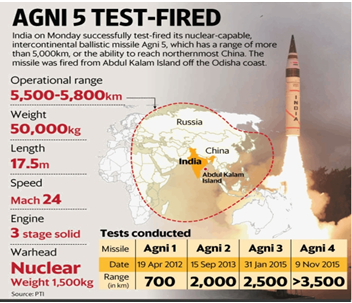
- The Agni missile series is part of India’s Integrated Guided Missile Development Programme (IGMDP) launched in the 1980s under Dr. A.P.J. Abdul Kalam.
- They are surface-to-surface, nuclear-capable ballistic missiles developed by DRDO to strengthen India’s credible minimum deterrence under its nuclear doctrine.
- The series provides India with a triad-based deterrence strategy, complementing air and sea-based delivery systems.
Classification of Agni Missiles
|
Missile |
Range |
Stages / Fuel |
Key Features |
|
Agni-I |
~700–1,200 km |
Single-stage, Solid fuel |
Short-range ballistic missile |
|
Agni-II |
~2,000–3,000 km |
Two-stage, Solid fuel |
Medium-range capability |
|
Agni-III |
~3,500 km |
Two-stage, Solid fuel |
Can strike deep into China |
|
Agni-IV |
~3,500–4,000 km |
Two-stage, Solid fuel |
Enhanced accuracy, advanced navigation & guidance |
|
Agni-V |
5,000–5,500+ km |
Three-stage, Solid fuel |
Long-range, MIRV technology |
|
Agni-VI (under development) |
8,000–10,000 km |
Likely Three-stage, Solid fuel |
Expected with MIRV & MARV |
|
MIRV (Multiple Independently Targetable Re-entry Vehicle):
|


Prelims Articles
Context:
The Vigyan Dhara scheme, launched in January 2025 by merging three DST umbrella schemes, has supported numerous start-ups, research institutions, and Technology Business Incubators across India.
Vigyan Dhara Scheme
Origin:
- The Vigyan Dhara Scheme came into force on 16th January 2025 by merging:
- Science and Technology Institutional and Human Capacity Building
- Research and Development
- Innovation, Technology Development and Deployment.
Type of Scheme:
- It is a Central Sector Scheme implemented pan-India by the Department of Science and Technology (DST).
Support for Startups:
- NIDHI-SEED support has been provided to 36 Technology Business Incubators (TBIs).
- These TBIs extended Seed Funds to 72 Startups.
- Selection was through Seed Support Management Committee (SSMC) using criteria such as feasibility, novelty, impact, and market potential.
Financial Allocation & Utilization:
- 2024–25: ?330.75 crore allocated; ?271.98 crore utilized.
- 2025–26: ?1425 crore allocated; ?984.33 crore utilized.
- Total Utilization (till 12 Aug 2025): ?1256.31 crore out of ?1755.75 crore allocated.
State-wise Beneficiaries:
- Highest:Uttar Pradesh (13,195), Rajasthan (12,424), Karnataka (6,676).
- Lowest: Lakshadweep (5), Nagaland (18), Mizoram (28).


Prelims Articles
Context:
Chief of the Army Staff (COAS) and AWWA President pledged organ donation, giving a boost to the Armed Forces Organ Retrieval & Transplantation Authority (AORTA).
About AORTA:
- Armed Forces Organ Retrieval & Transplantation Authority (AORTA) functions under the Director General Armed Forces Medical Services (DGAFMS).
- It coordinates organ retrieval, transplantation, and awareness programmes within the Armed Forces.
- AORTA has positioned itself as a national leader in organ donation initiatives.
India’s Organ Donation Landscape:
- Organ donation in India is regulated by the Transplantation of Human Organs and Tissues Act, 1994 (THOTA), amended in 2011.
- National Organ and Tissue Transplant Organisation (NOTTO) is the apex national-level body under the Ministry of Health and Family Welfare.
- India has low organ donation rates (around 8 per million population) compared to global standards.
- Initiatives like AORTA help bridge awareness and trust gaps.


Editorials
Context:
Three new Bills propose to remove ministers facing criminal charges, raising concerns about misuse, political vendetta, and democratic implications.
Legal and Political Dimensions
- State’s Discretion in Criminalisation: The state decides which acts are criminal, but its discretion risks being misused for political or partisan purposes.
- Vulnerability of Politicians: Since 2015, as many as 193 cases against politicians have been registered by the Enforcement Directorate (ED), but only two convictions have occurred.
- Judicial Concerns: The Supreme Court and High Courts have repeatedly expressed concerns over the low conviction rates and potential misuse of investigative powers.
Administrative and Democratic Concerns
- Risk of Political Corruption: Bills enabling disqualification on the basis of mere charges or custodial detention may incentivize false cases against opponents.
- Electoral Consequences: Such measures can curtail fair competition in elections by sidelining opposition leaders before due process of law is completed.
- Threat to Federal Balance: Frequent interventions through central agencies like ED and CBI may undermine State governments’ functioning and autonomy.
Way Forward and Safeguards
- Due Process Must Prevail:Any disqualification of elected representatives must follow judicial conviction, not mere allegation or charge-sheet.
- Political Accountability Mechanisms:Parliament and political parties must strengthen internal accountability and ethical standards rather than bypassing judicial safeguards.
- Comprehensive Reform Needed:Comprehensive reforms in criminal justice delivery, speedy trials, and electoral laws are essential instead of shortcut disqualification provisions.
Practice Question:
“Disqualifying ministers facing criminal charges through legislative shortcuts risks undermining democratic fairness and due process. Critically examine the challenges posed by such measures and suggest alternative reforms for ensuring political accountability.” (250 words)


Editorials
Context:
The Special Intensive Revision (SIR) of electoral rolls in Bihar has led to the deletion of nearly 3.5 million migrant voters (4.4% of total voters), raising concerns of large-scale disenfranchisement.
Structural Barriers in Electoral System
- Sedentary-Centric Infrastructure: India’s voter registration is still based on proof of residence and in-person verification, which disadvantages migrants living in rented rooms, slums, or temporary sites.
- Migrants’ Vulnerable Position: Migrants face dual exclusion: they cannot register in destination States due to outsider-tag and are being removed from origin rolls due to absence during verification.
- Political Resistance in Host States: Fear of altered electoral outcomes, regionalism, and sub-nationalism discourages host States from facilitating migrant voter inclusion.
Democratic and Social Implications
- Declining Voter Participation: Bihar’s average turnout in the last four Assembly elections was only 53.2%, the lowest among major States, reflecting the widening democratic deficit.
- Triple Burden Identified by Study: A TISS-ECI study (2015) highlighted three barriers for migrants: administrative hurdles, digital illiteracy, and social exclusion.
- Seasonal and Circular Migration Dynamics: Around 7 million circular migrants leave Bihar annually, with 2.7 million returning during festivals, but many will be unable to vote due to mass deletions from electoral rolls.
The Way Forward
- Need for Portable Electoral Identity: India requires a portable and flexible voter identity system, enabling verification across origin and destination States.
- Role of Local Governance and Civil Society: Panchayats and community bodies should conduct migrant-focused outreach and re-registration drives for ensuring democratic participation.
- Replicating Kerala’s Migration Survey Model: High migration States like Bihar and Uttar Pradesh must adopt systematic migration surveys to track and protect voters’ rights.
Practice Question:
“Large-scale disenfranchisement of internal migrants highlights the tension between India’s sedentary electoral infrastructure and its mobile workforce. Discuss the challenges and suggest reforms to ensure inclusive electoral participation.” (250 words)


Editorials
Context:
Himachal Pradesh has lost 50% of its glacier area in the last 30 years, raising questions about development, resilience, and redefining prosperity.
Climate Challenges in the Himalayas
- Melting Glaciers and Disasters: In Himachal Pradesh, rapid glacial melt has caused frequent floods, landslides, and road destruction, threatening lives and livelihoods.
- Cascade of Uncertain Risks: Data indicates an indefinite series of cascading disasters, making future planning highly uncertain for the Himalayan region.
- Redefining Development and Value: The crisis calls for a shift in the definition of prosperity, moving beyond economic growth towards ecological balance and resilience.
Psychological and Social Dimensions
- Alarmism and Fatalism: Excessive focus on catastrophic projections creates numbness and fatalism, reducing people’s sense of agency to act.
- Need for Constructive Narratives: Building hope-driven narratives that combine determination with wisdom can inspire communities to face challenges positively.
- Role of Education and Awareness: Raising awareness through eco-sensitive education is vital for cultivating a generation capable of adaptive thinking and resilience.
Pathways for Future Action
- Localised and Inclusive Solutions:Civil society organisations must scale up restoration and disaster-mitigation solutions to strengthen local resilience.
- Multi-layered Response Strategy:Future planning must integrate climate fragility with development aspirations, ensuring sustainability in high-risk ecosystems.
- Balancing Prosperity with Ecology:True prosperity lies in equitable development within ecological limits, demanding cooperation between governments, civil society, and citizens.
Practice Question:
“Alarmist narratives around climate change often paralyse communities instead of empowering them. In the context of Himalayan vulnerabilities, critically examine how development planning can balance ecological fragility with human aspirations.” (250 words)


